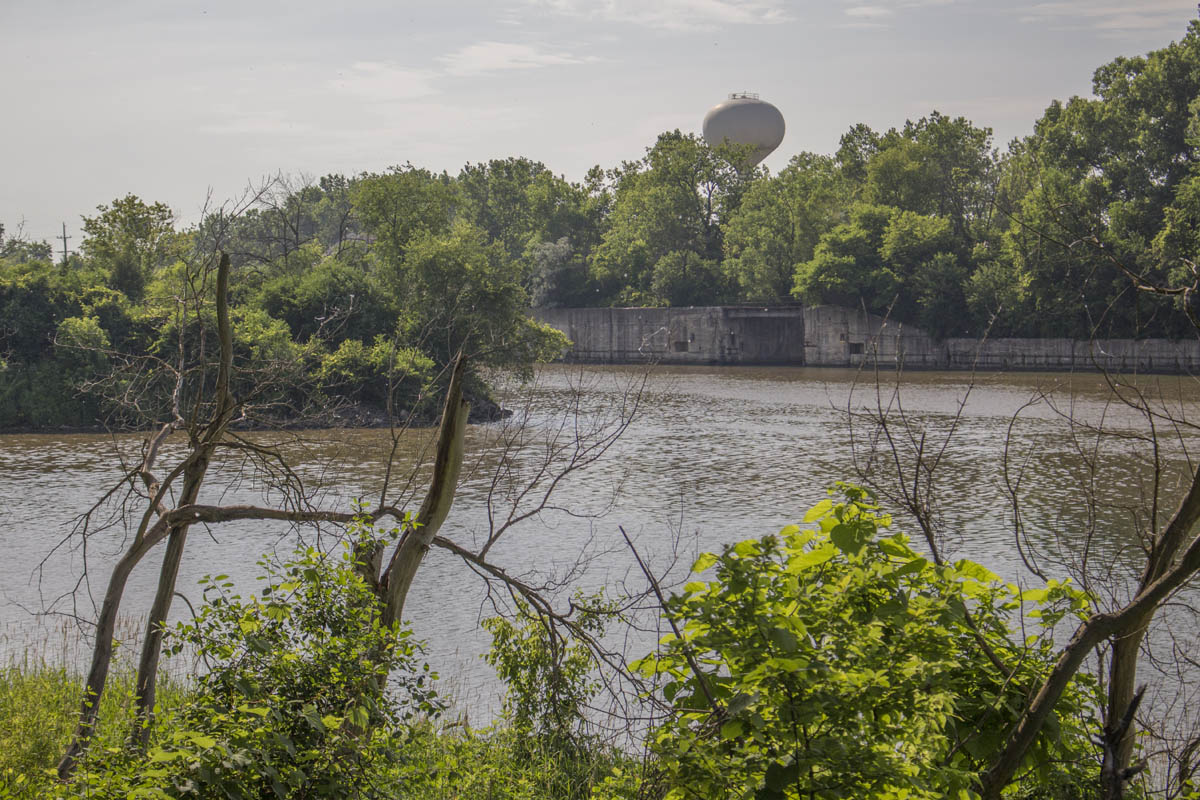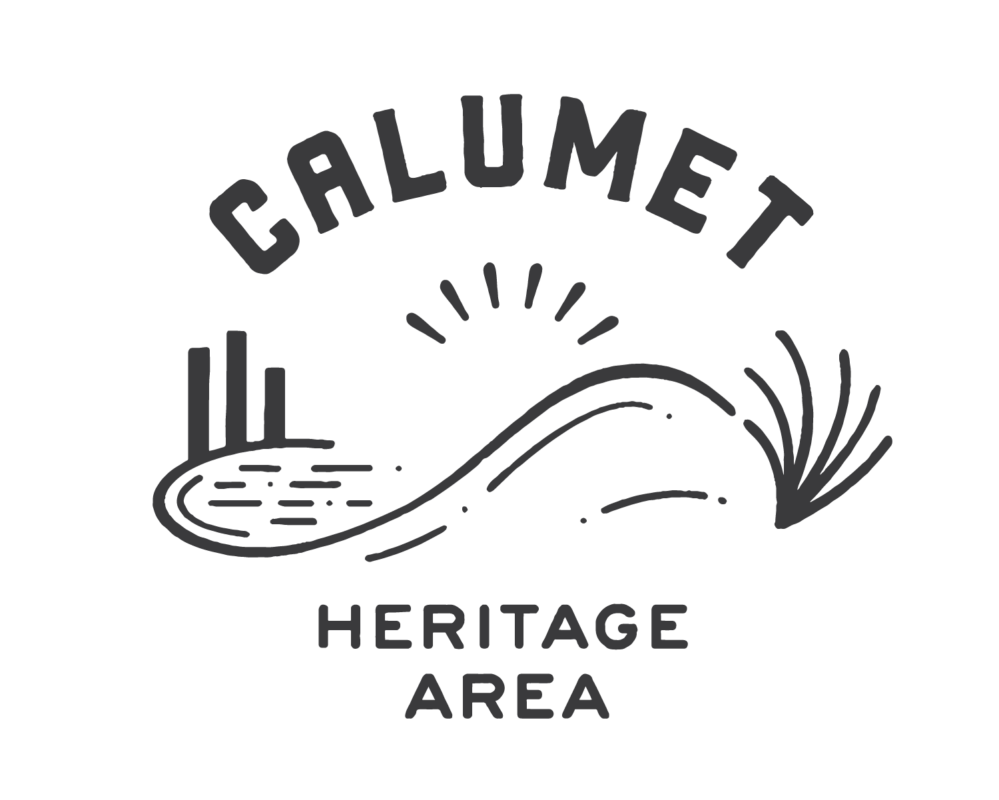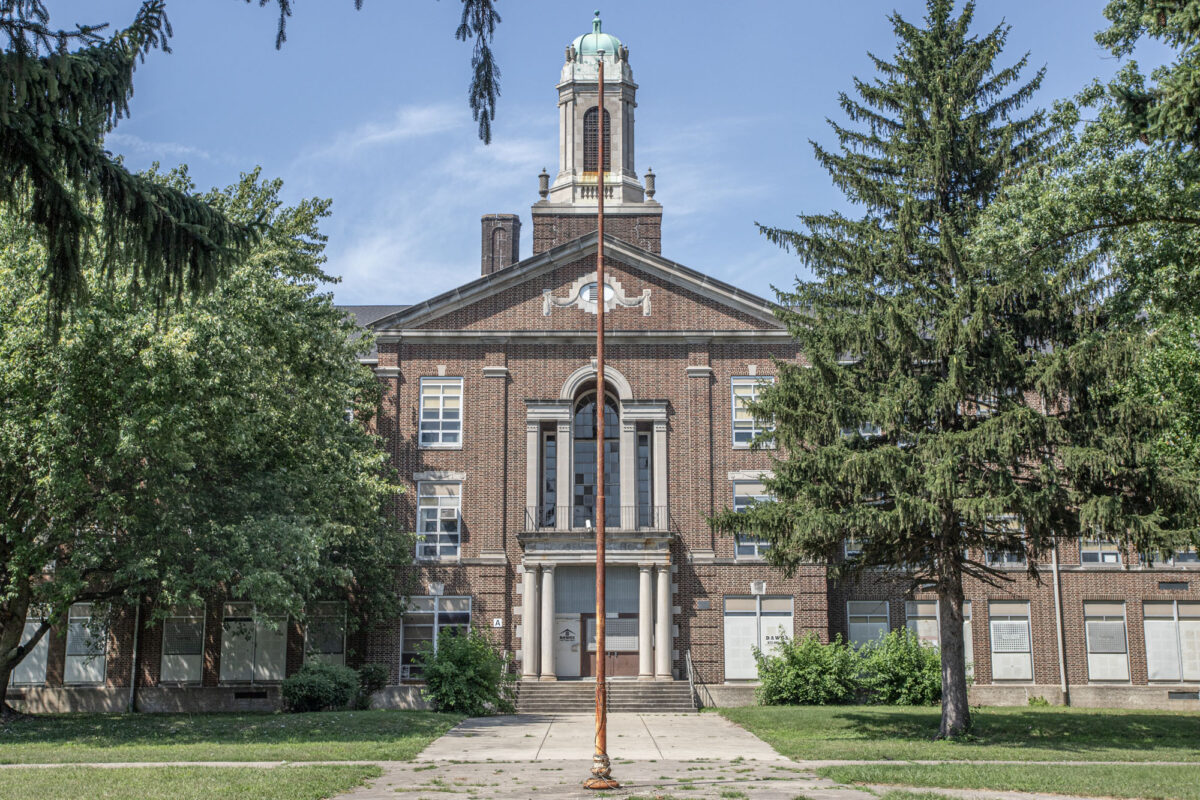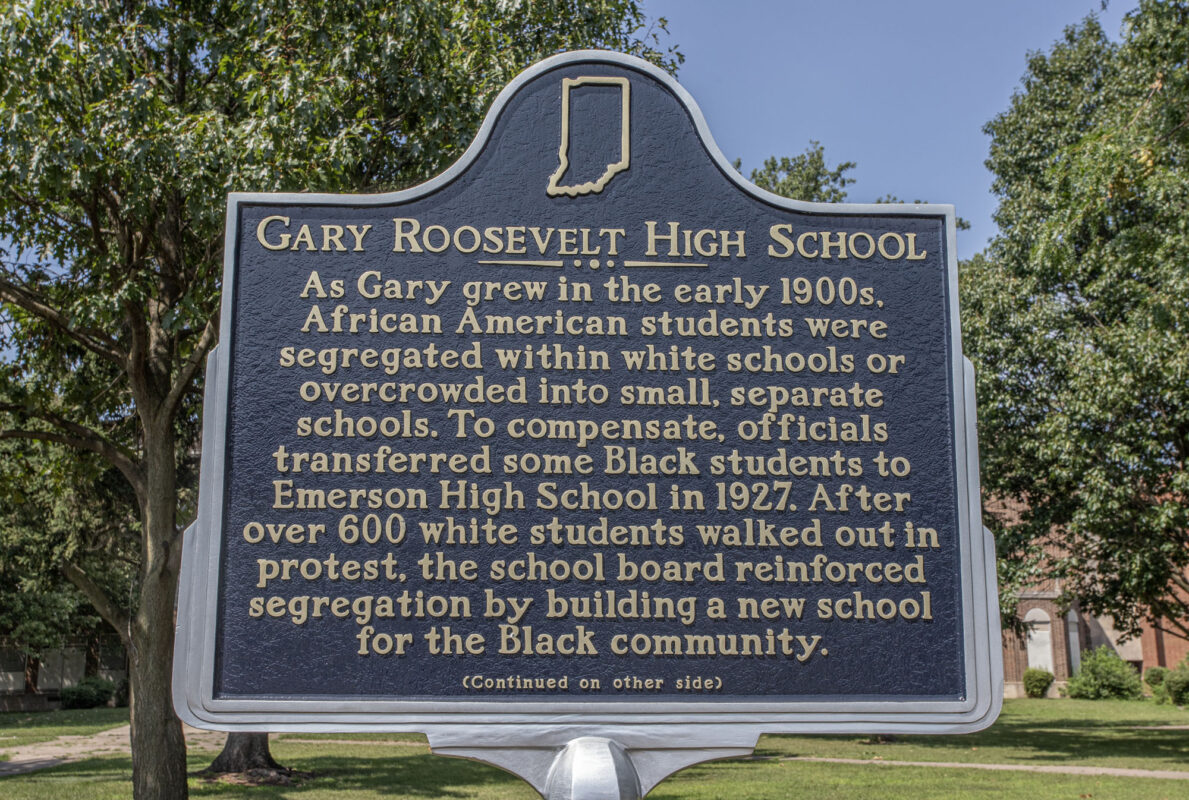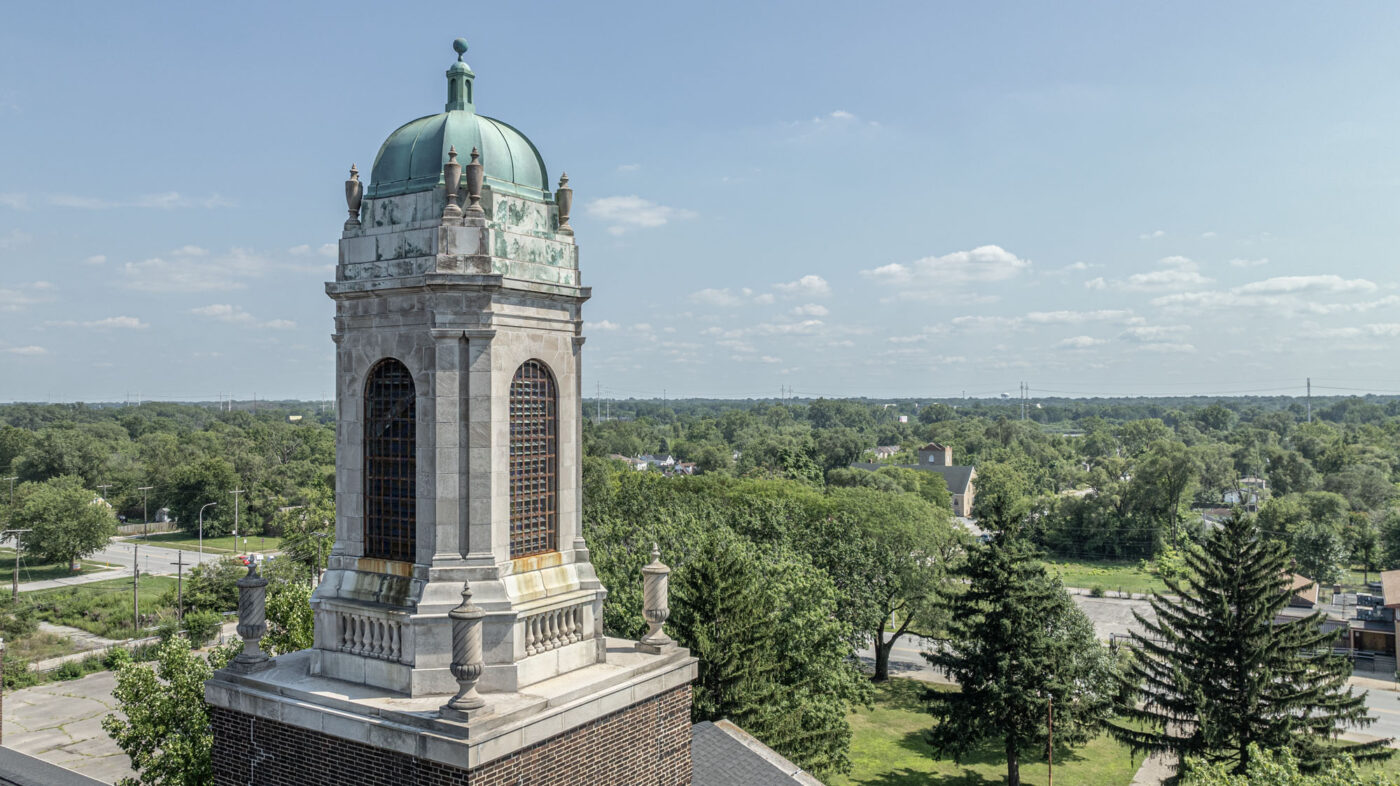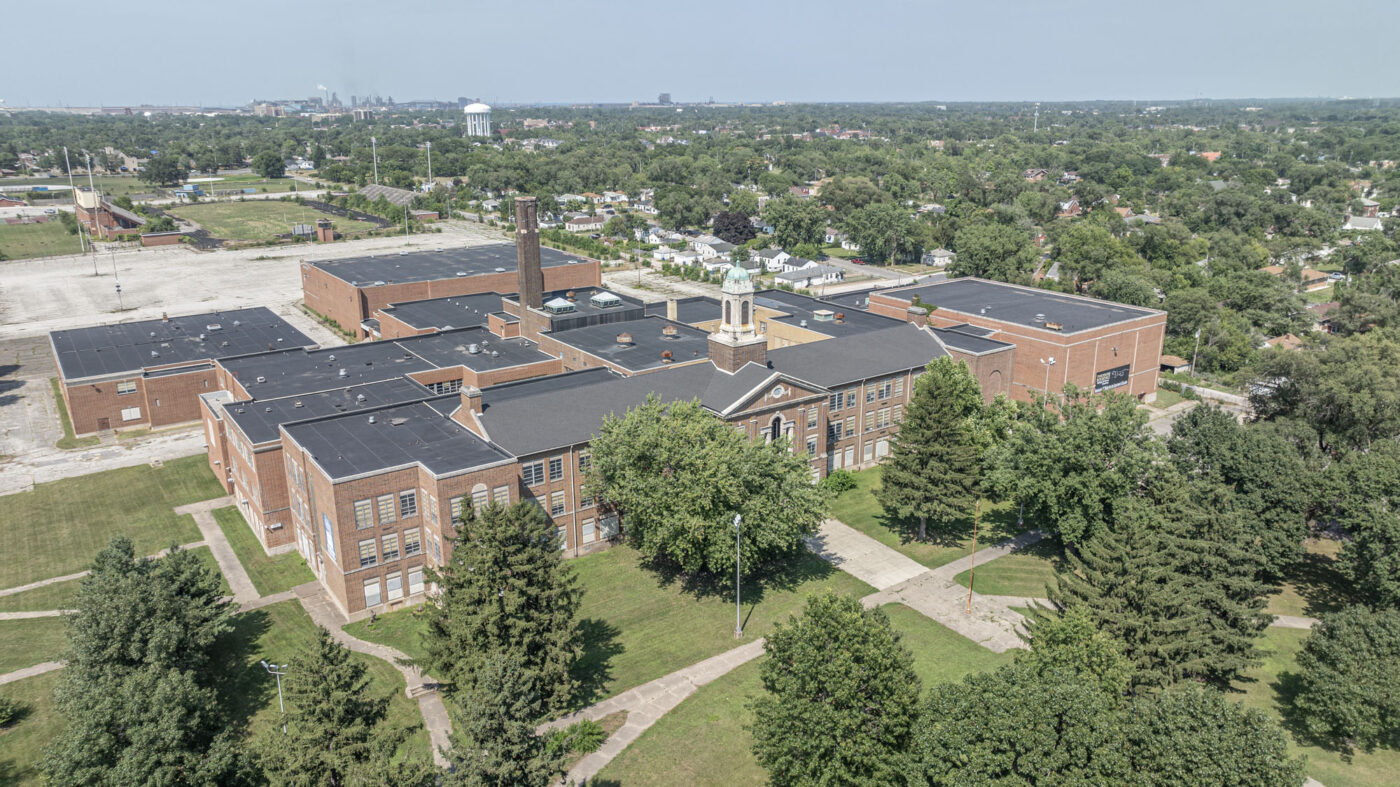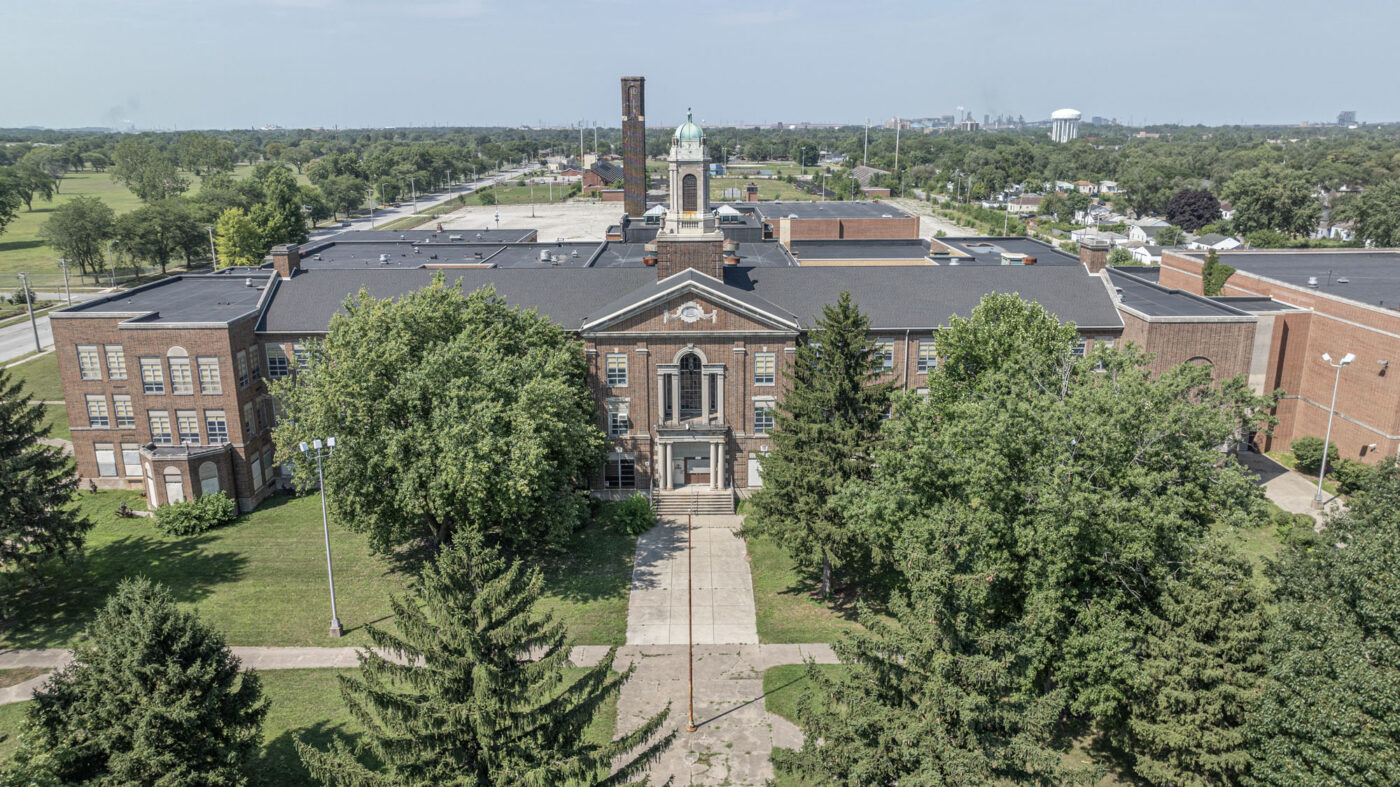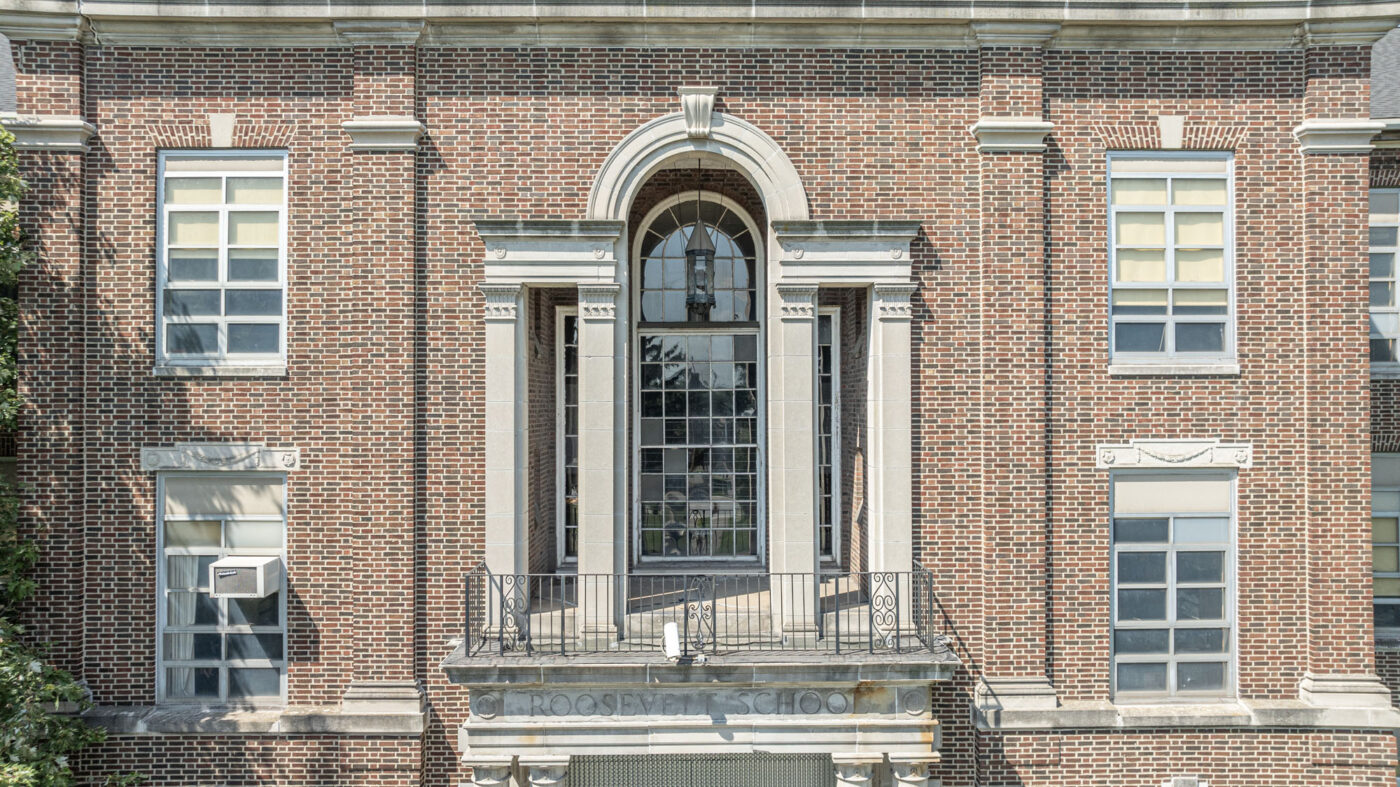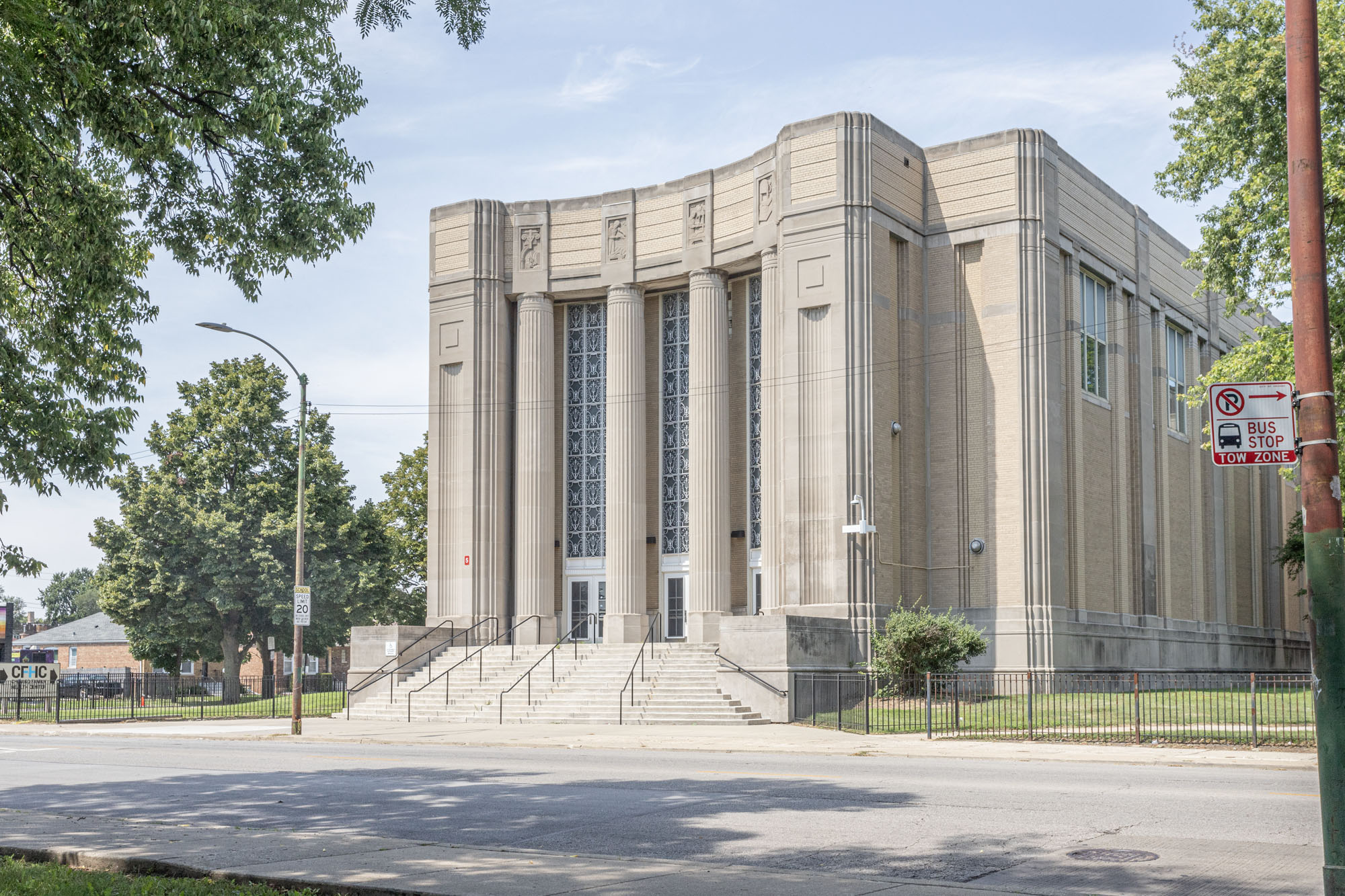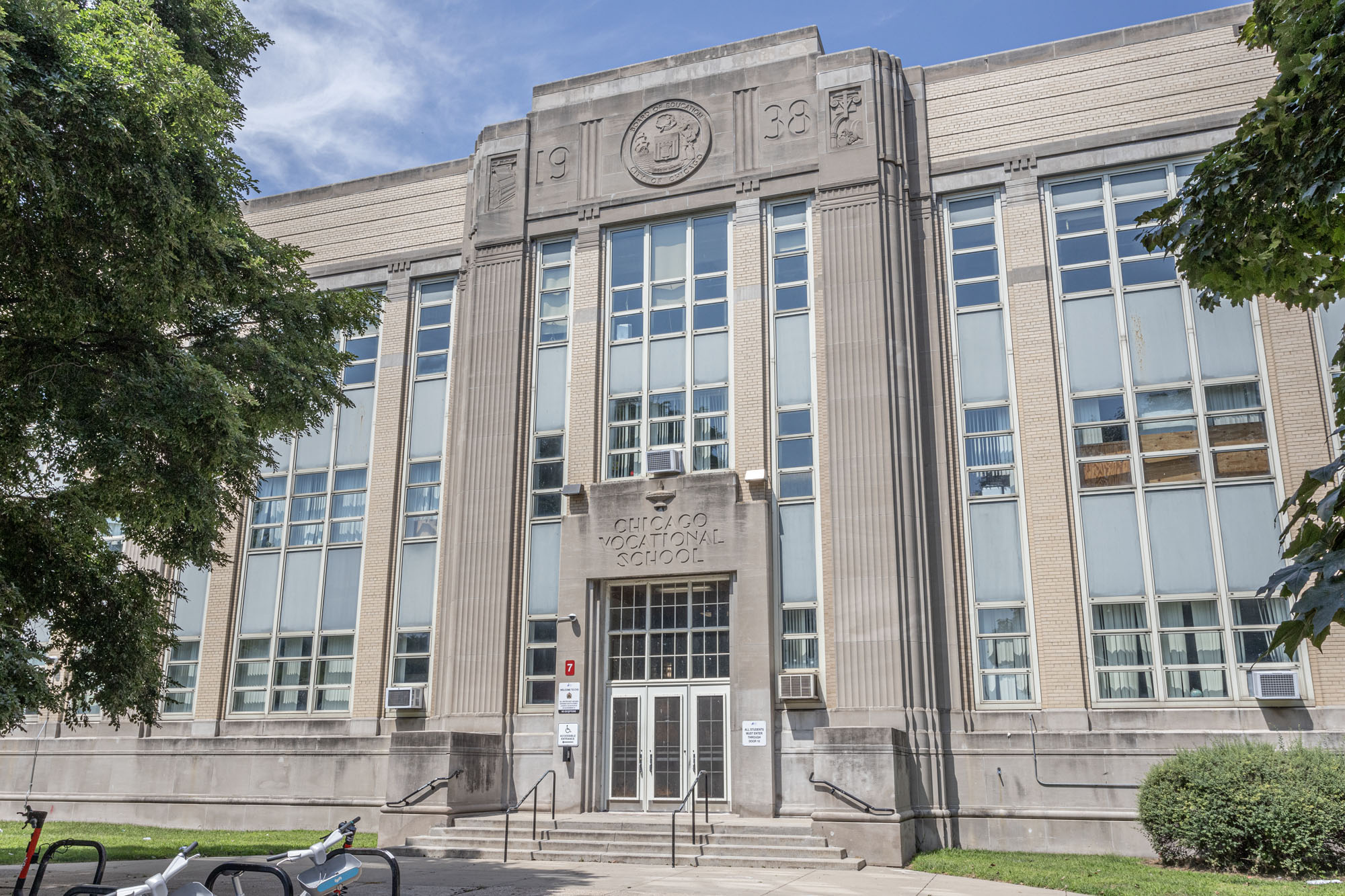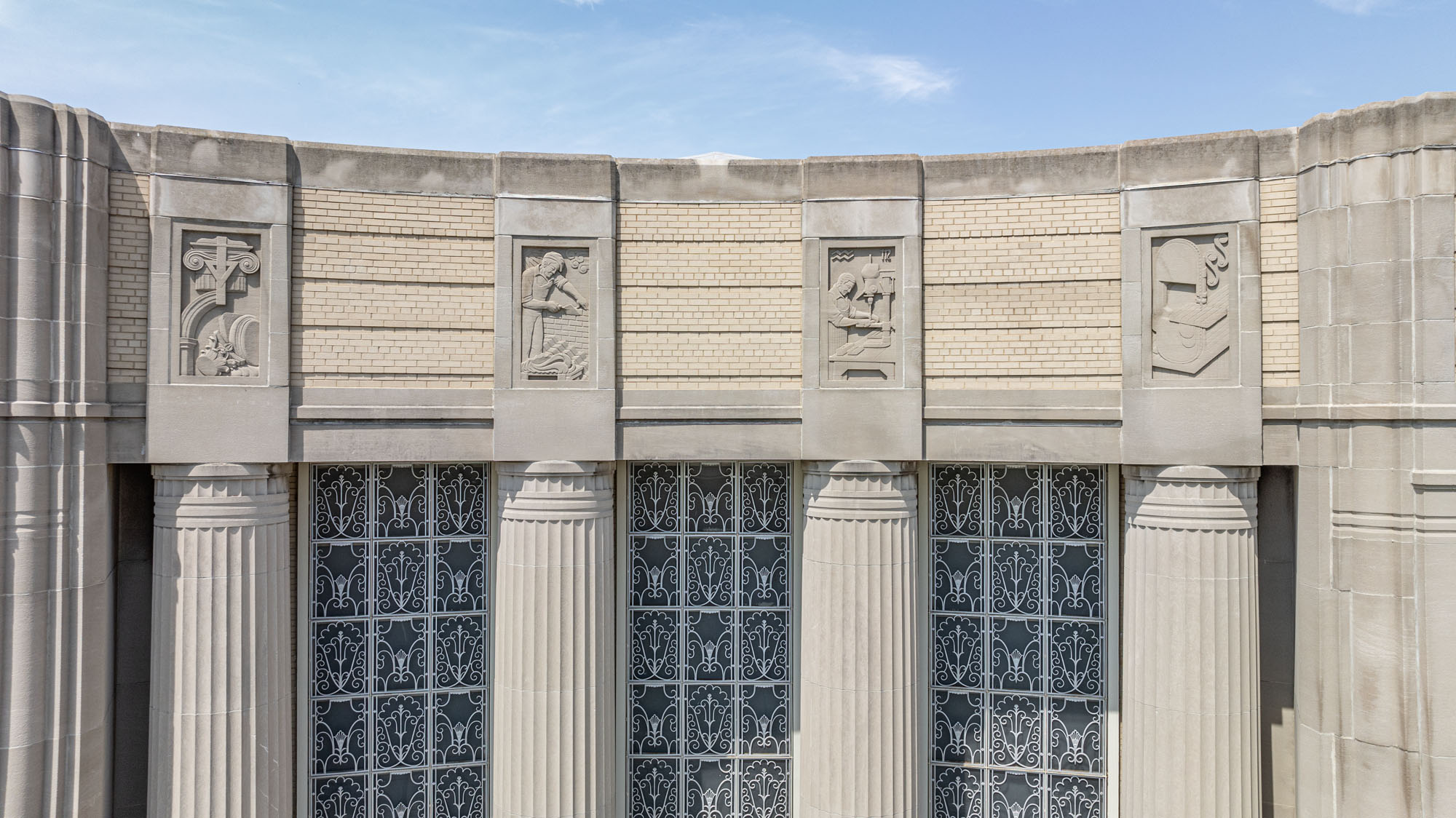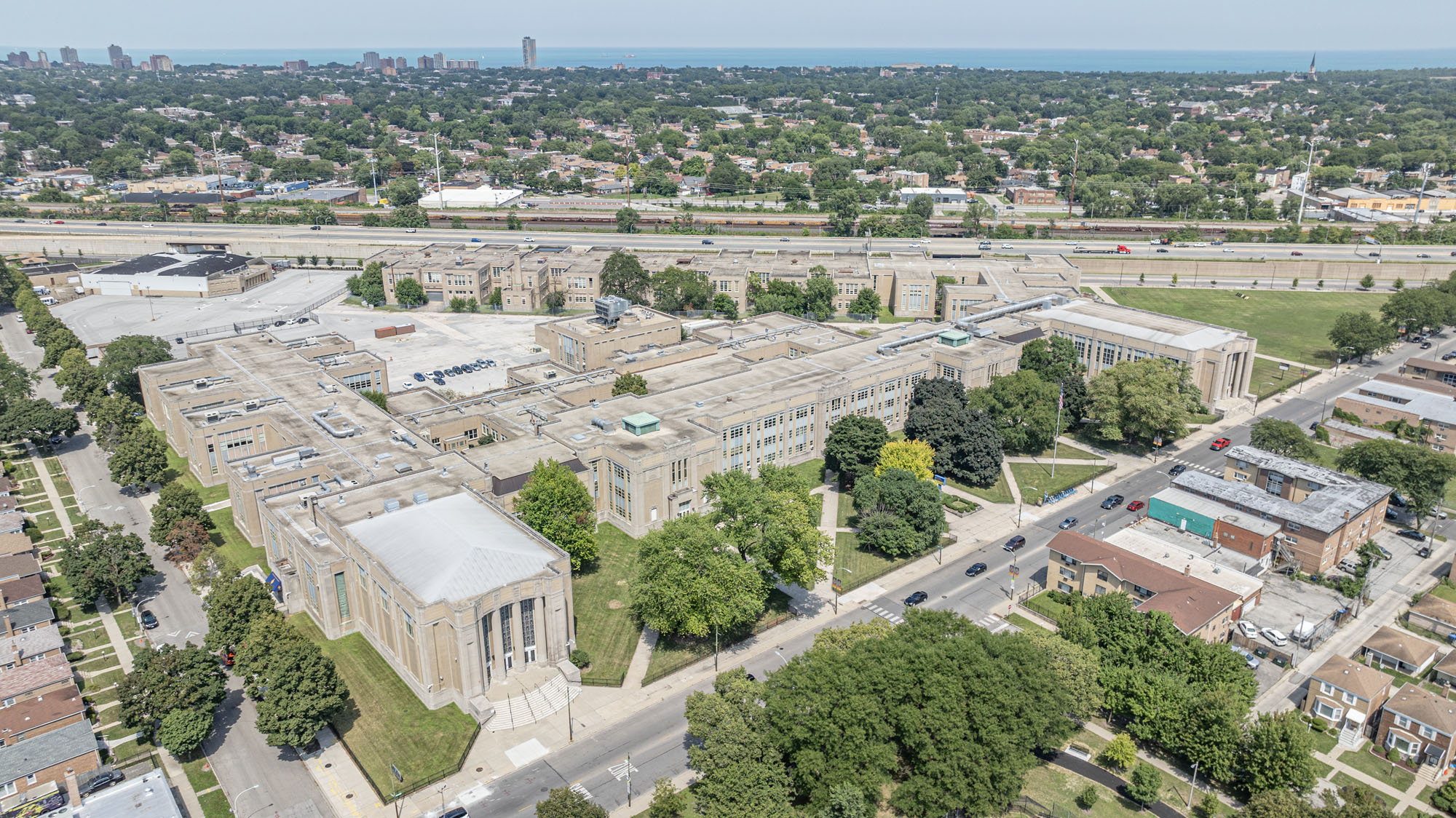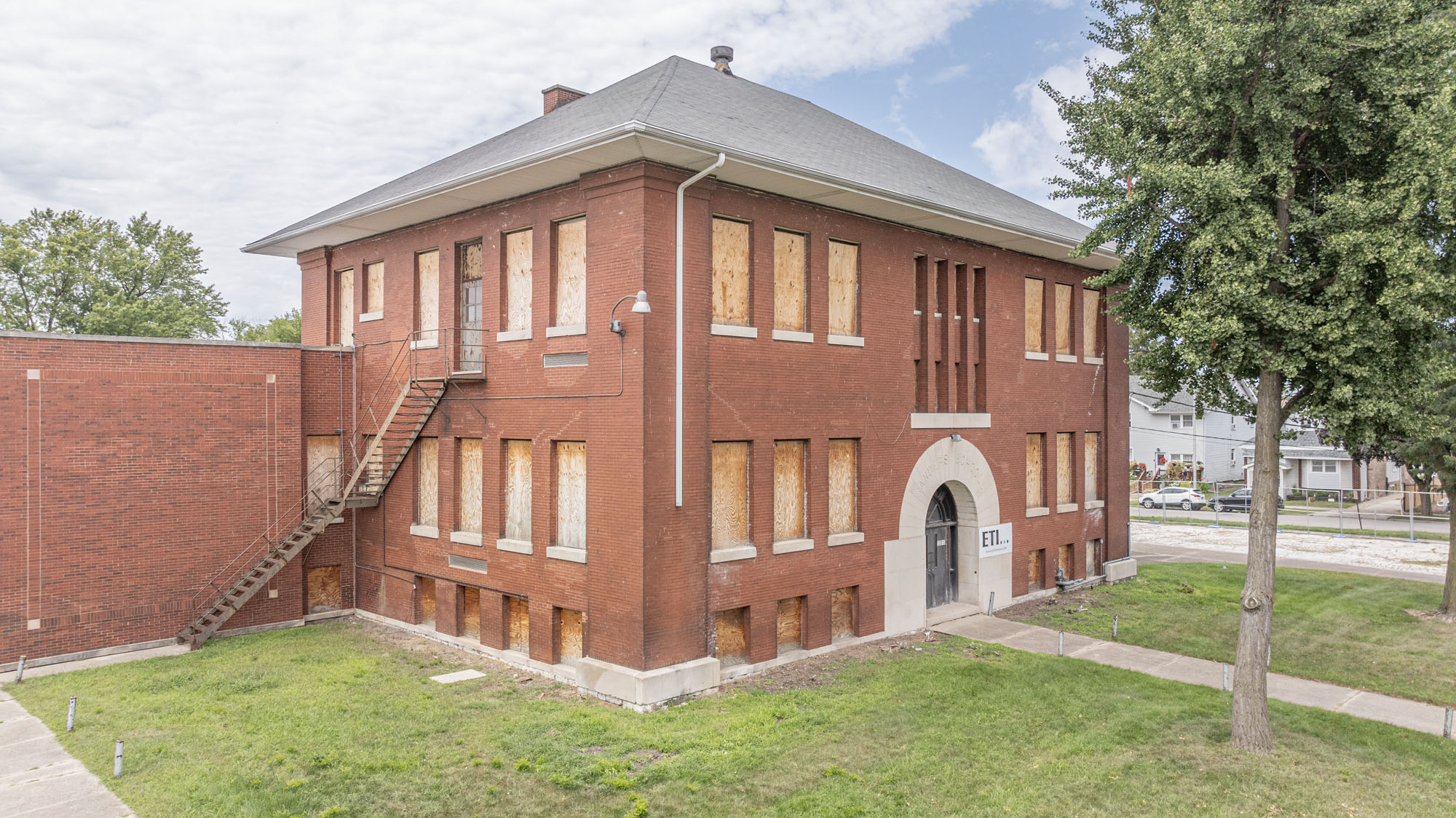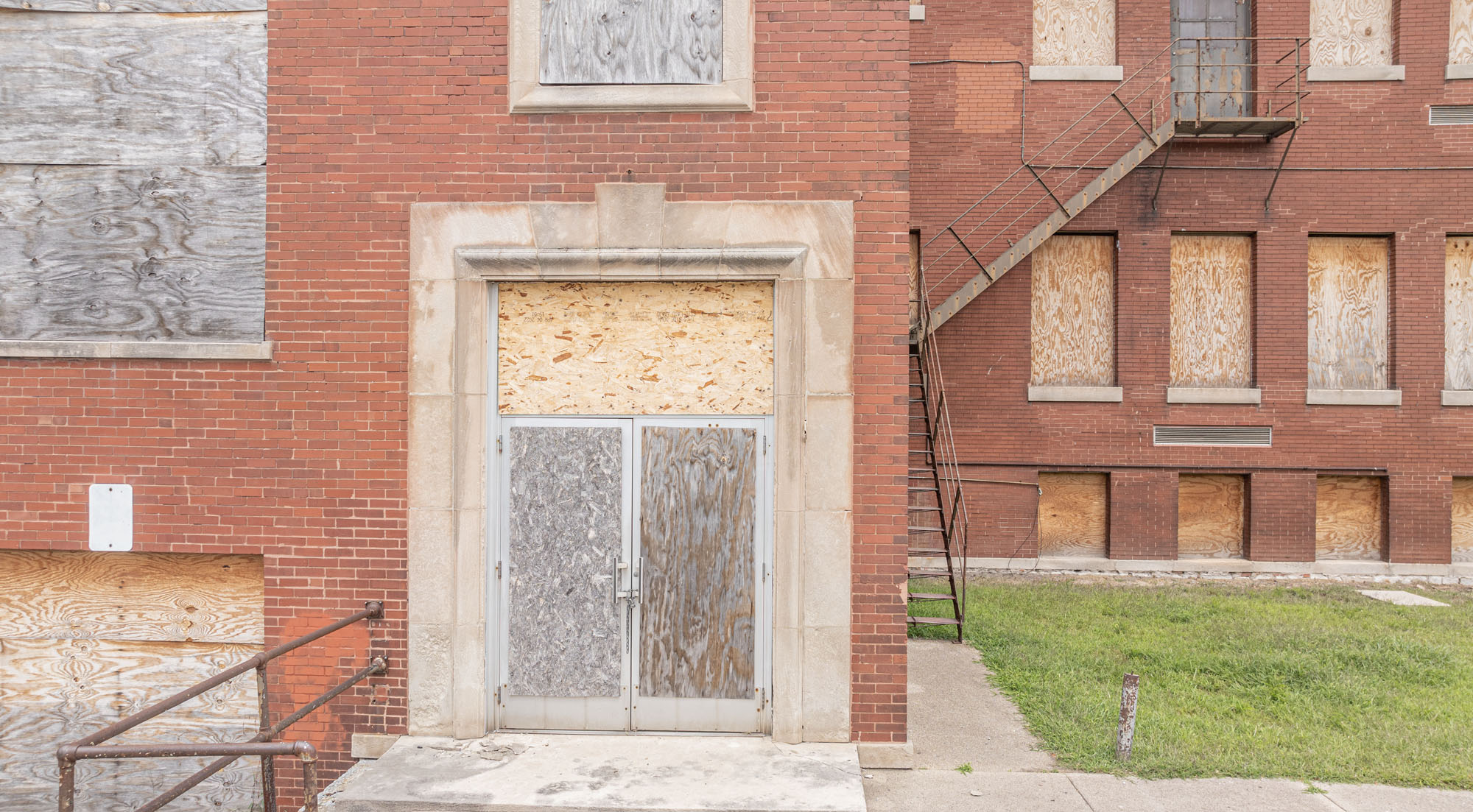Critical Calumet 2024
An important part of the Calumet Heritage Area’s mission to protect cultural heritage places and natural sites is the annual endangered list titled Critical Calumet.
Indiana
Theodore Roosevelt (Gary Roosevelt) High School
730 W. 25th Avenue, Gary, IN
This building also appears on the National Trust for Historic Preservation’s 11 Most Endangered Historic Places list for 2024.
WHY IT’S SIGNIFICANT
When it was built in 1930, Theodore Roosevelt High School—more commonly known as Gary Roosevelt—was one of only three high schools in Indiana constructed exclusively for Black students. At its peak, the impressive Colonial Revival structure housed more than 3,000 students, making it one of the largest African American high schools in the Midwest. The school became a point of pride for the city’s Black community. Educators expected students to be civically active and engaged, a mindset that remains evident in the school’s strong alumni groups.
CURRENT CONDITION
In more recent years, shrinking enrollment, financial hardship, and chronic academic failure sent the school into deepening decline. In February 2019, a failing heat system and frigid temperatures caused multiple pipes to burst, sending water cascading into classrooms and offices and forcing the school to move students off-site. Since then, supporters have worked to reimagine the landmark’s future. Repair costs for the school, which is listed in the National Register of Historic Places, are estimated to be $20 million. A coalition including the Gary East Side Community Development Corporation, National Gary Theodore Roosevelt Alumni Association, Indiana Landmarks Black Heritage Preservation Program, and other key partners are exploring feasible reuse strategies for Roosevelt now that it will no longer be used as a school.
Illinois
Chicago Vocational School
2100 E. 87th St, Chicago, IL
Also appears on Preservation Chicago’s “Chicago 7” list for 2024.
WHY IT’S SIGNIFICANT
Chicago Vocational Career Academy, commonly known as CVS, is among the most notable examples of Art Deco/Art Moderne architecture in the city of Chicago. It is also the largest such structure in Chicago that is not a downtown skyscraper. Constructed between 1938 and 1941, Chicago Vocational High School was intended as a southern counterpart to Albert G. Lane Technical College Preparatory High School (1908, 1934), more commonly known today as Lane Tech.
A combination of generational demographic shifts, changes in urban educational philosophy, and federal financial support all led to the eventual creation of Chicago Vocational High School. Beyond its sheer size– the school’s four principal structures sit on a 22-acre triangular parcel–the school is significant as a former site of wartime preparedness during WWII, an early and surviving Public Works Administration/Works Progress Administration-funded project in Chicago, and an Avalon Park institution that was once affectionately known as “The Pride of South Side.”
CURRENT CONDITION
CVS is an active Chicago Public School, with a renewed emphasis on STEM (Science, Technology, Engineering, and Math) education and college preparedness. Enrollment, however, has dwindled. As of 2023, the school had only approximately 800 students in a facility originally designed to accommodate anywhere from 4,000 to 6,000 full time enrollees.
In 2022, CVS alumni operating under the banner of “Chicago Vocational H.S. Restoration Project” mounted a successful campaign to list the property on the National Register of Historic Places. That same group has made further appeals to make Chicago Vocational School a Chicago Landmark in the hopes that such a formal distinction could assist efforts to bolster both the school’s evolving curriculum and the physical campus itself.
As noted, enrollment is a shadow of what it once was. The school is currently serving little more than a tenth of its intended capacity. Not surprisingly then, much building maintenance has been deferred throughout the school’s four buildings. The “Anthony Wing” was briefly targeted for demolition as a cost-saving measure (a lack of necessary funding for the demolition prevented that outcome).
The Chicago Public School system as a whole, likewise, is perennially challenged by emerging resource needs, teacher shortages, and budget shortfalls. At CVS, these issues are compounded by the ongoing and delicate maintenance needs of a hulking 1930s era structure. The school remains open, and there are no apparent plans to close and/or downsize the facility. However, CVS needs an infusion of funds to address both deferred maintenance and, as alumni contend, modernization of the curriculum for a twenty-first century workforce.
Sanders School
13010 Division Street, Blue Island, IL
The main block of this building was built in 1900 as a school to serve the East Side of Blue Island. It remained in the School District’s control until the 1990s, when it was sold to a private entity and eventually left abandoned in the early 2000s. The property was reacquired by the School District in 2019, with their plans for the building currently unknown.
WHY IT’S SIGNIFICANT
The building is one of several structures in Blue Island designed by George Maher, and one of just 3 still standing. As a principal in the development of Prairie School architecture his influence was regarded as “profound and prolonged and, in its time, certainly as great as was [Frank Lloyd] Wright’s.” It was said of Maher and his associates that their work attracted “more attention and caus(ed) more comment than any other architectural development in America.” The Prairie School was America’s first attempt at producing an indigenous architecture, and this building exhibits a variety of important features of the style, including simplified geometric forms, deep eaves and spare surface decoration.
This building was named after Benjamin Sanders (1815-1881), who came to this area in 1840 and in 1846 with his wife Elizabeth purchased all of the land between what is today Western Ave. and Union, Division, and Vermont Streets. Sanders first worked as a carpenter and farmer, later serving the community as one of its first lawyers and then as the first village president when Blue Island incorporated in 1872. He was a trustee of Worth Township and one of the organizers of Calumet Township in 1862 and served as one of its trustees. As the building chair of the Cook County Board he helped to establish Cook County Hospital in 1866 and rebuild the city after the Great Chicago Fire of 1871.
– Some content contributed by Ken Jellema
CURRENT CONDITION
The building’s exterior masonry walls appear to be in good condition, as does the roof over the main block of the building – the condition of the flat roof over the building’s addition is fair overall and drains well, though there’s a minor leak in a corner, where the roofing material has pulled away from parapet and a small tree is growing. Luckily, the floors of this part of the building are constructed of concrete and steel, and damage to the wood-framed roof is relatively minor and localized.
Almost all exterior windows and doors have been boarded up, and a temporary fence has been installed around the perimeter of the property. The building’s interior has been gutted extensively to remediate asbestos, though many old, possibly original features remain.
